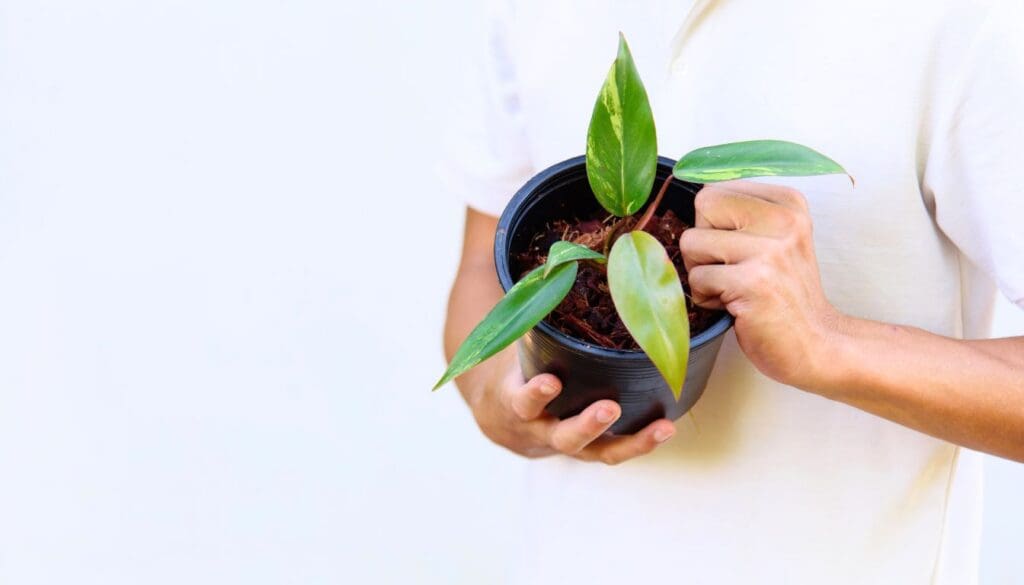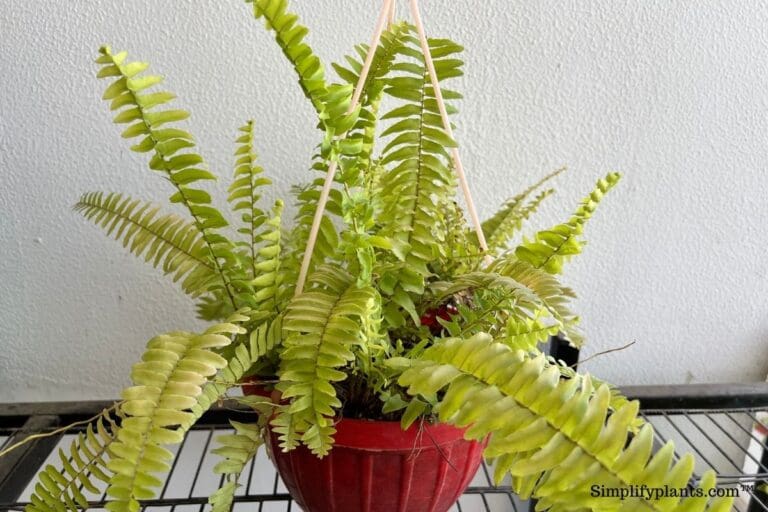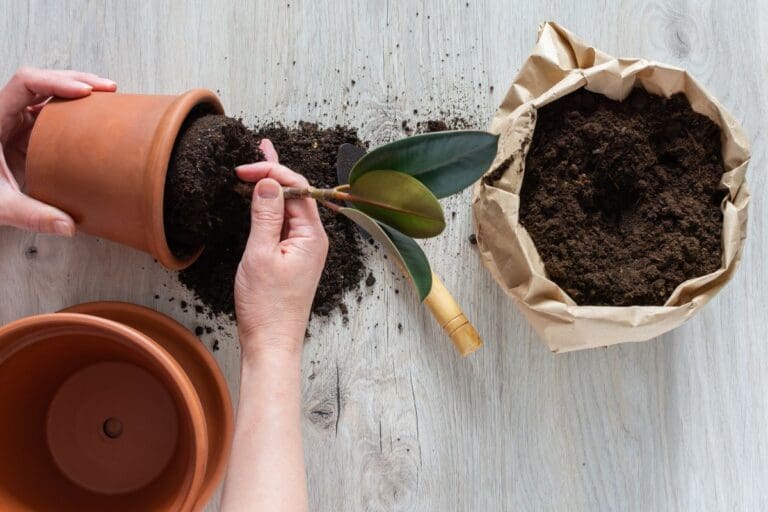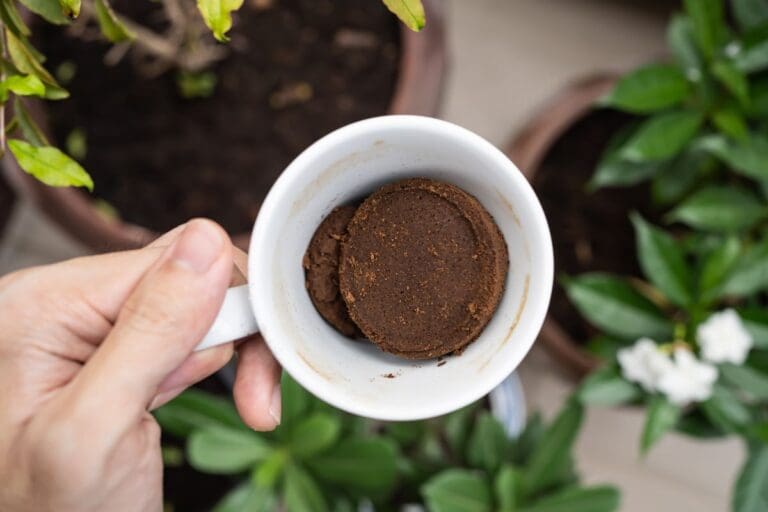How To Propagate Philodendron? (Soil And Water Propagation)
The philodendrons are quick growers. It can grow up to 10 cm weekly, provided the season is ideal for them. So, you need to control them by trimming their vines, or it may cover a lot of space. If you want your philodendrons to be healthy and bushy, prune them and use them for further propagation. Now, how can we propagate philodendrons? Let’s discuss.
To get new plants out of your current philodendron, trim the vines or stems and propagate them. For internodal cutting, cut them between two nodes (keeping their position in mind), one for cutting and the other intact. For multiple cutting, each cutting must be around 4-6 inches long, and you have to put them all in a single pot. You can propagate philodendrons both in soil and water.
What will you do if your philodendrons are growing too much, covering a lot of space in your room? It is a great idea to prune the extra parts of your philodendron and propagate them.
This article will discuss how to propagate a healthy philodendron, along with some tricks and tips for healthy propagation. Let’s read.

Please note: Simplify Plants is reader-supported. Some links in the post are affiliate links and I get a commission from purchases made through links in the post.
Best time to propagate philodendrons
Never try propagating bad-quality philodendrons. If you find any sort of problem in the plant, do not propagate it. If the plant has spots, looks yellowish, or the leaves look pale, weak, and discolored, do not propagate such plants.
The best way to propagate is to let the plant grow. Sometimes it may take a little more time to grow, but you should let it grow. Keep caring for your plant. It will grow well and will not interfere in propagation. When the plant grows excessively, trim it and again propagate it.
Another thing you need to keep in mind while propagating the philodendron is the weather.
Philodendrons come from tropical environments. It is best to propagate them in warm weather. If we ever propagate them in winter, their growth will be compromised. They will fail to propagate well during winter.
The best season to propagate Philodendrons is early spring when the days get longer. This time is ideal for the propagation of philodendrons.
Always remember one thing, Patience is a great virtue. Have patience. Let your plant propagate without any disturbance. If it is taking more time to grow, let it be. Don’t lose your patience.
It would be best if you gave your plant the chance to improve. Give it time. Take proper care. Your plant will propagate healthily.
Now, let us talk about the ways of propagating a philodendron.
Materials needed to propagate philodendron
Before propagation, you need to know about the supplies needed to propagate the philodendrons:
- A pair of scissors or pruners
- Horticulture oil and disinfectants
- Paper clips
- Sphagnum moss
- A container or a jar to keep the cuttings
- Soil and perlite mix
- Water
Let us discuss the utilization of the materials.
Scissors and pruners are used for cutting the stems or the leaves for propagation.
Disinfectants are needed to keep the scissors and pruners clean to avoid transferring any bacteria from the scissors/pruners to the plant.
Horticulture oils are used to get rid of pests and fungi. Pests like mealy bugs, spider mites, or aphids and fungi like powdery mildew can attack the plant. So, to prevent such attacks, horticulture oils, especially neem oil, are used in plants.
Ways of propagating philodendrons
There are two ways of propagating philodendrons:
- Propagation in water
- Propagation in soil
Let’s know how both ways work, respectively.
Propagation of philodendron in water
First of all, find an open space for this work. It can be a messy procedure. So find a suitable place.
Begin with cleaning the scissors/pruners. Start cleaning the scissors and pruners.
Cleaning your pruners with disinfectant will help prevent the transfer of bacteria from the pruners to the plant. If you don’t clean them, the bacteria in them can get transferred to the plants. So, cleaning is a must to avoid these.
Take the cutting

In the case of climbing philodendrons, one single vine of the philodendron can create many cuttings. Cutting is the most critical part. If we cut the wrong part, then the plant will fail to propagate.
The main part of the plant is the aerial roots of the particular plant. Now, how do you get the roots?
Roots start developing from the nodes of the plant. While cutting the stem, cut in between the nodes. It can be called internodal cutting. It should be done carefully, keeping the node’s position in mind.
Each cutting must have two nodes, you must dip one inside the water in the jar, and the other one will be intact, having one or two leaves.
Propagating philodendron in water is relatively easy, but you must be delicate enough to handle it. Don’t make a cut just beside the nodes. Keep some space, at least half-inch, and do the cutting.
Now, put the other cuttings together.
Notice the aerial roots.
If you notice any air roots in your philodendrons, that isn’t an issue. Instead, you can take it as a positive sign for your plant. This will allow your plant to grow faster. They will turn into water roots later.
Next, we will make use of the container or the jar.
Fill the container or the jar with water.
The size of the container must rely upon the size of your plant and its cuttings.
Fill the jar with water. I prefer rainwater or distilled water. Now dip the cuttings of your philodendrons into the jar.
Immerse the cuttings from the node into the jar.
Check whether the node is immersed in the water because the philodendron will develop roots from the node, so the node must be inside the water.
Also, you must change the water every week. Freshwater is necessary for better development in the propagation process.
Add supplements or fertilizers to the water.
Adding supplements to the water will help the plant receive the proper amount of micronutrients they need.
Instead of buying from the market, you can use some handmade fertilizers.
You can use eggshell-soaked water. The process is very simple. Take a container, add half a liter of water to it, and soak some crushed eggshells. Keep it aside for about five to six days.
After that, throw away some water from the jar containing your philodendron, and in that jar, add the eggshell-soaked water. Just see that it must be 50% eggshell-soaked water and 50% standard water.
The eggshell contains both calcium and magnesium, the two most essential micronutrients philodendrons need. However, I think homemade supplements are much better than those bought from markets, as they may contain harmful chemicals for your plants. So homemade are always the best.
Also read: Are Coffee Grounds Good For Philodendron? (+How To Use It Correctly)
Placement of the philodendron
We have read earlier that philodendrons are tropical plants. They thrive in a tropical environment. So they need warm weather. You must place your philodendron in a spot with the proper amount of warmth.
Keep the plant under indirect sunlight. Direct sunlight can lead to sunburn. However, indirect sunlight will give an adequate amount of light and warmth.
Always be patient. Give your plants time to grow. If there are air roots, they will later develop into water roots, and then the plants will grow well.
Always keep the roots under observation. When the roots grow more than 4 inches, you must repot from water to soil. Take a pot filled with soil and perlite.
Also read: Where Do You Put A Philodendron? (Ideal Spot+Factors To Consider)
Repotting the philodendron during early root growth
For repotting, take a pot with a sound drainage system. You can put pebbles at the bottom to prevent the blockage of the drainage holes.
You must use a mix of soil and perlite to avoid the dampness of the soil. The mixture will also help in the proper air circulation of the soil.
Now, remove the cuttings from the water jar. Check the color of the root properly. Move the plant from the jar to the pot if no root is rotting.
Continue to look after your plant.
Keep watering the pot consistently. Do not overwater the plants. The roots are fragile at the moment. Overwatering the plant can lead to root rot.
Do check if the soil is too damp. Excess dampness can rot the roots.
Keep them in such a place where they receive the necessary amount of air and light.
After some months, water them as ordinary plants.
Next, let’s discuss soil propagation and also get more related to the repotting of the plant.
Propagation of philodendron in soil

In the water process, we have read that we first dipped the cuttings into the water and then moved them into the soil.
In this soil process, we will directly put the cuttings into the soil.
The cutting method of the philodendron is the same as explained in the water propagation. Now, let’s see the procedure of soil propagation.
- Disinfect your scissors to avoid the transfer of bacteria. Then pick a vine or stem and cut the node.
- Now, put the cutting from the node deep into the soil. The node is the place where roots are developed.
- Philodendrons need aerated soil for proper drainage. You can improve air circulation by increasing the amount of perlite in the soil. The soil must not be too damp. It must remain slightly moist.
- Take a pot and add soil to it. Mix the soil with some perlite. It will help in the air circulation and proper drainage.
- The pot’s size should be based on the size of your plant. A small-sized pot will not allow proper root growth and will cause damage to the roots.
- It would be best to repot your philodendron according to the development of the roots and the plant. You must maintain consistency in repotting.
- The placement of the pot is crucial. You must place the plant in a place where it receives warmth, indirect sunlight, and proper air. Only then will your philodendron survive and remain healthy.
Avoid keeping your plant in direct sunlight or a cold environment.
Direct sunlight can cause sunburn. Philodendrons enjoy warm weather and cannot stand cold temperatures.
So, you can propagate Philodendrons in both soil and water. They are easy to look after. They can proliferate if taken good care of.
The process of propagation is also very easy. In water, you have to wait for the water roots and then repot them in the soil. But, in soil propagation, you can directly put the cuttings into the soil.
Propagation without cuttings
Another way of propagating the philodendron can be without any cuttings. If you have enough space to grow philodendrons, you can do one more thing instead of cutting them from the parent plant.
Arrange two or more pots filled with soil and perlite mixture and place them beside the plants. Ensure that the vines or stems of the plant touch the soil mix of the pot next to it. Repeat the same with other vines or stems for other pots.
The above procedure may not work well. In the case of climbing philodendron, you can use some clips to pin the vine in such a way towards the pot so that the node can touch the soil and develop roots. This will work well.
Follow the same for all other vines. Pin them down towards the soil.
Always remember to water the pots from time to time. Keep the soil moist. But yes, not too much moisture, as that would lead to root rots.
After some weeks, you can see roots of about some inches.
Once the roots grow well, separate them from the parent plant by using sterilized scissors or pruners. The new philodendrons are now ready to grow independently.
So, this is a natural procedure of propagating philodendron without cutting. All you need is more space to grow them and the arrival of the roots before separating them from the parent plant.
Pruning the philodendron will make your plant’s growth much better, healthier, bushier, and more appealing. Take good care of plants, follow the steps and procedures correctly, have patience, and enjoy propagating your philodendrons!
Ref: Wikipedia.
Recommended Garden Supplies
| Product Image | Our Recommended Gardening Supplies | Check Offers! |
|---|---|---|
Top Top
Top
Top
Top
Top
Top
Top
Top | rePotme Houseplant and Tropical Classic Potting Soil Mix | Check Offer On Amazon |
 Top
Top
Top
Top
Top
Top
Top
Top | Espoma Organic Indoor Plant Food | Check Offer On Amazon |
 Top
Top
Top
Top
Top
Top
Top
Top | GooingTop LED Grow Light 6000K Full Spectrum Clip Plant Growing Lamp | Check Offer On Amazon |
 Top
Top
Top
Top
Top
Top
Top
Top | Soil Moisture Meter | Check Offer On Amazon |
 Top
Top
Top
Top
Top
Top
Top
Top | Govee Hygrometer Thermometer, Bluetooth Enabled! | Check Offer On Amazon |
 Top
Top | LEVOIT Humidifiers for Large Room(Best For Plants) | Check Offer On Amazon |
 Top
Top
Top
Top
Top
Top
Top
Top | Upgraded DIY Automatic Drip Irrigation Kit, 15 Potted Houseplants Support | Check Offer On Amazon |
 Top
Top
Top
Top
Top
Top
Top
Top | Stainless Steel Heavy Duty Gardening Tool Set | Check Offer On Amazon |
 Top
Top
Top
Top
Top
Top
Top
Top | Bonide Insecticidal Soap | Check Offer On Amazon |
 Top
Top
Top
Top
Top
Top
Top
Top | Bonide 32 oz Spray Neem Oil for Organic Gardening | Check Offer On Amazon |
 Top
Top
Top
Top
Top
Top
Top
Top | Garden Safe Fungicide | Check Offer On Amazon |







